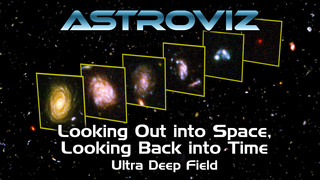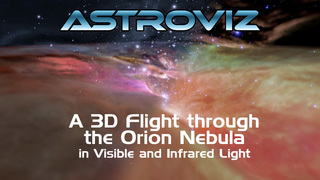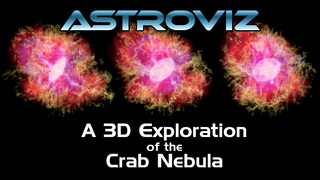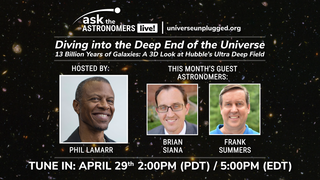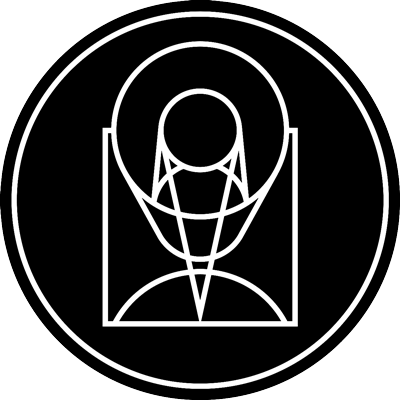Feedback for Looking Out into Space, Looking Back into Time - AstroViz
By leaving feedback, you agree to allow NASA's Universe of Learning to publish the content and information you provide in your submission form. We will only use this information to recognize your entry on our series and social media, and we will never publish your email.
Looking Out into Space, Looking Back into Time - AstroViz
Primary
•
November 1st, 2021
This six-minute visual exploration of the Hubble Ultra Deep Field showcases the characteristics and contents of this landmark observation, as well as its four-dimensional nature across both space and time. In particular, galaxies are seen to more than 12 billion light-years away / 12 billion years ago, allowing astronomers to trace the development of galaxies across cosmic time.
A deep field is a long exposure on a small field of view to observe the faintest objects possible. The Ultra Deep Field (UDF) represents the deepest visible light observation of the universe (deeper views are extensions / subsets of this 2004 image). Containing about 10 thousand sources, the UDF provides a statistical sample of galaxies across the universe.
In this sequence, the 3D model of the UDF data set uses NASA and other images and source catalogs. More than 5000 galaxies with cross-matched image cutout and distance measure are placed in their correct relative position throughout the long thin pyramid of the observation. To keep the fly-throughs succinct, the depth of the pyramid is shortened by a factor of a few hundred.
The visualization encompasses a suite of UDF science points in a single camera shot journey. Zooms, fades, fly-throughs, and overlay graphics visually express and highlight aspects such as the field of view, long exposure time, variety of galaxies, and extent across the observable universe. The critical idea that "looking farther out into space is also looking farther back in time" leads to examples, drawn directly from the data, of galaxy structure changing and growing over time.
The Ultra Deep Field, and other deep field studies, helps astronomers study the distribution, characteristics, and development of galaxies across space and time.
Visualization: Frank Summers, Alyssa Pagan, Leah Hustak, Greg Bacon, Zolt Levay, Lisa Frattare (STScI)
Data: Anton Koekemoer, Bahram Mobasher, and HUDF Team
Music: "Autumn: Meditativo" by Dee Yan-Key CC BY-NC-SA 4.0
View this video on Hubblesite.org

